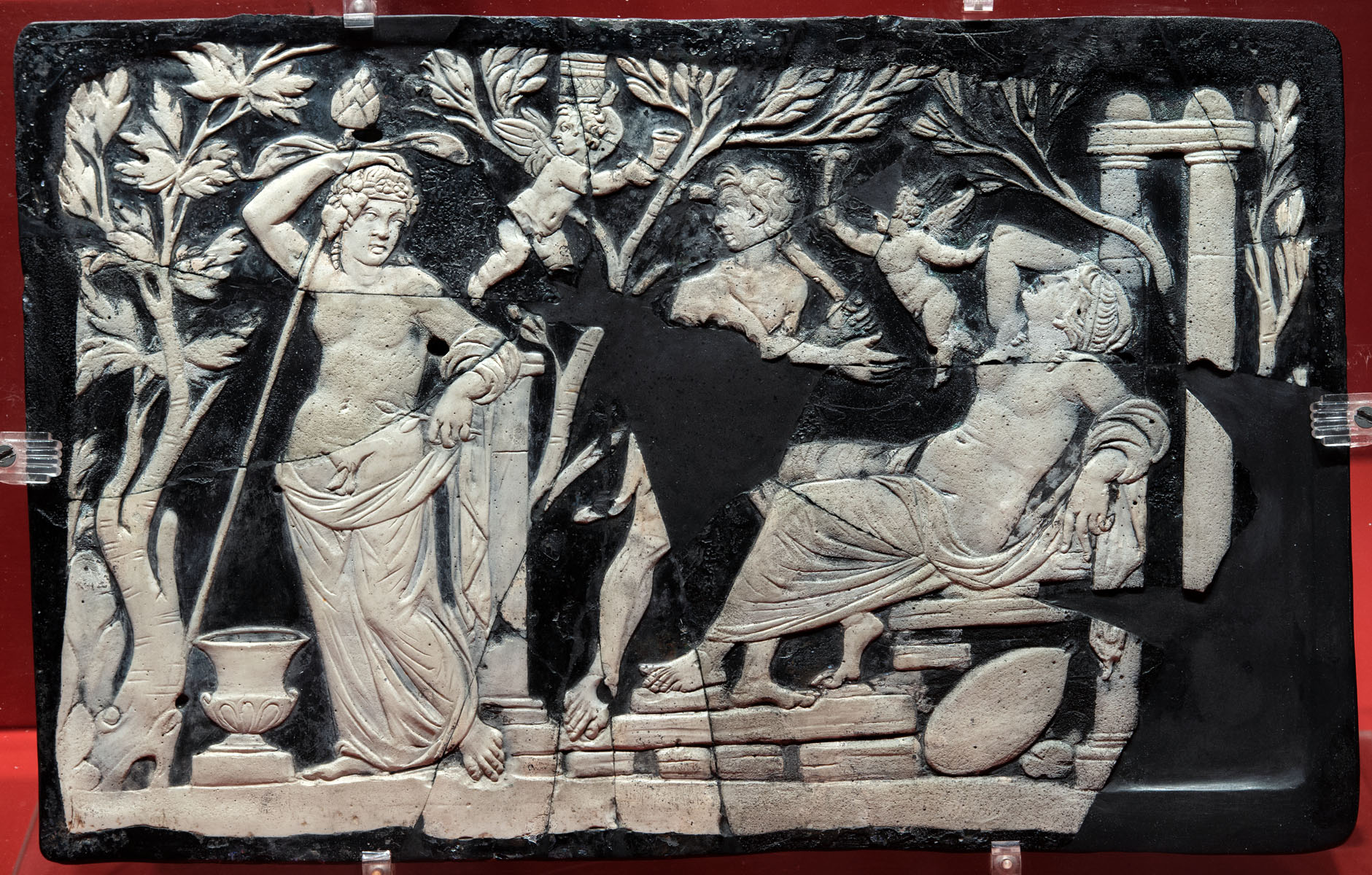
Blue and white glass.
Late 1st cent. BCE — early 1st cent. CE.
25.3 × 40.0 × 1.0 cm. Inv. No. ex MANN 153651.Pompeii, AntiquariumPhoto by Sergey Sosnovskiy
Bacchus and Ariadne.
Blue and white glass.
Late 1st cent. BCE — early 1st cent. CE.
25.3 × 40.0 × 1.0 cm.
Pompeii, Antiquarium.
Pannello con Bacco e Arianna
Primo ouarto del I secolo d. C.
Vetro cammeo a doppio strato bicolore bianche blu intenso.
Da Pompei, area dell’Insula Occidentalis presso Casa di Fabius Rufus.
Napoli, Museo Archeologico Nazionale.
Il pannello, forse utilizzato per decorare un mobiletto ligneo, raffigura il ritrovamento di Arianna da parte di Bacco: la fanciulla giace addormentata su elementi litici squadrati, mentre il dio, accompagnato da un Satiro e Amorini, è appoggiato a un pilastrino. L’episodio è diffusamente narrato da Ovidio solo nell’Ars amatoria, in cui descrive la vivacità del gruppo di seguaci di Bacco che si avvicina ad Arianna. Si tratta del momento che gode di maggiore fortuna nel repertorio figurativo di tutti i tempi: in ambito vesuviano la ricorrenza del mito si può forse riconoscere già dal I secolo a. C., ma è soprattutto nell’ultima fase di vita della città che si contano numerose immagini. Lo stile del pannello è ispirato al rilievo e alla glittica.
Panel with Bacchus and Ariadne
First quarter of the 1st century CE.
Cameo glass with double two-tone white and deep blue layer.
This panel, perhaps used to decorate a small piece of wooden furniture, illustrates the moment in which Ariadne is found by Bacchus.
The girl lies sleeping on square stones, as the god, accompanied by a Satyr and Cupids, leans against a small pillar. The episode is only described in any depth by Ovid in his Ars amatoria, in which he describes the vivacity of the group of Bacchus’ followers as they approach Ariadne. This is the most popular moment of all time in the figurative repertoire.
In the Vesuvian area, the myth seems to recur from as early as the 1st century BCE, but it was primarily towards the end of the city’s life that the most images were recorded. The style of the panel is inspired by relief sculptures and glyptic art.
Exhibition “Gods, Men, Heroes” (Saint Petersburg, The State Hermitage Museum, 18 Apr. — 23 Jun. 2019).
© 2018. Description: exhibition note from the exhibition “Ovidio: Loves, Myths & Other Stories”, Scuderie del Quirinale, Rome (17.10.2018 — 20.01.2019).